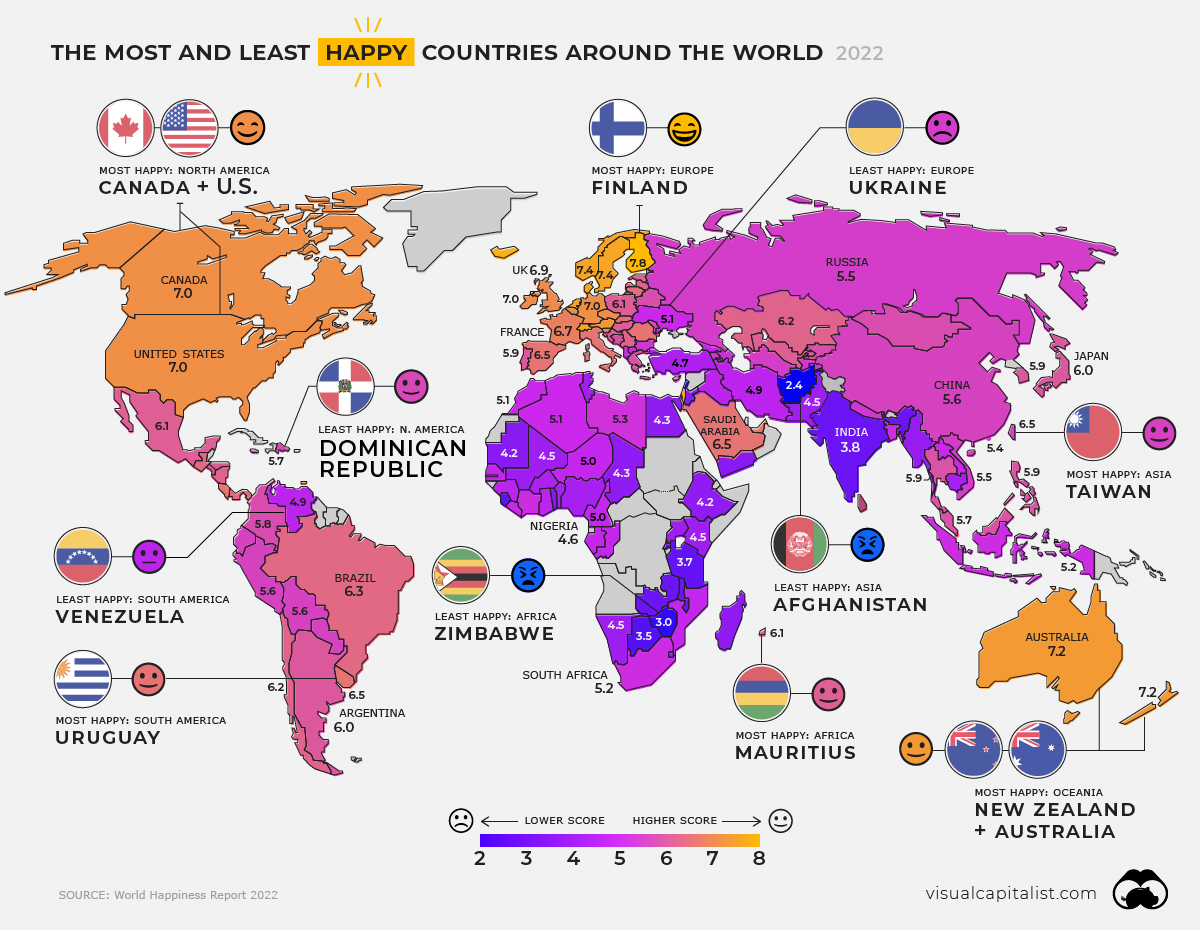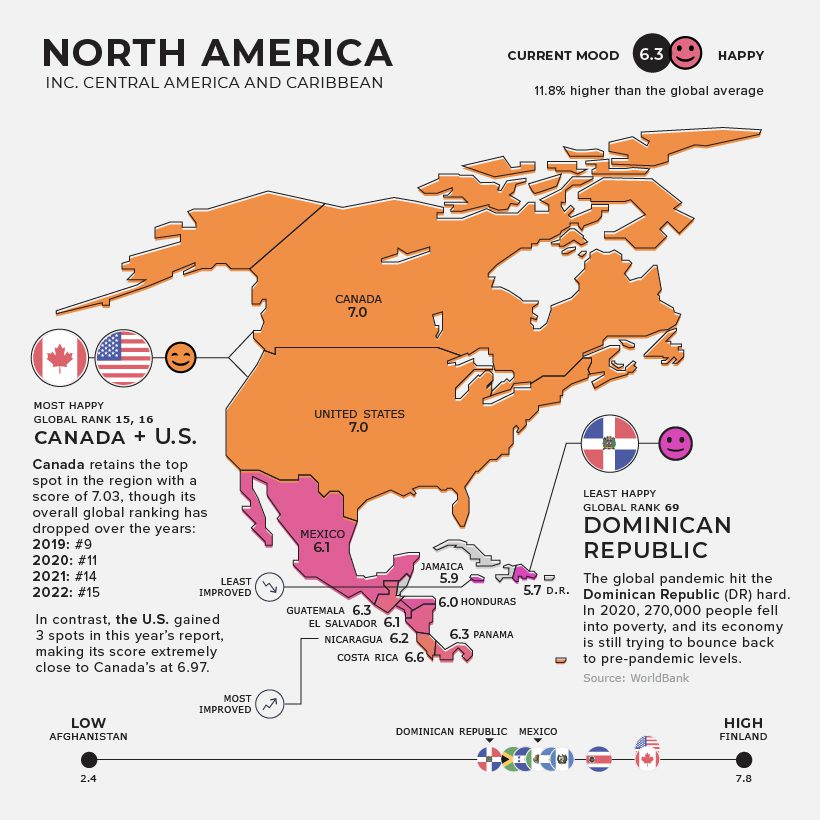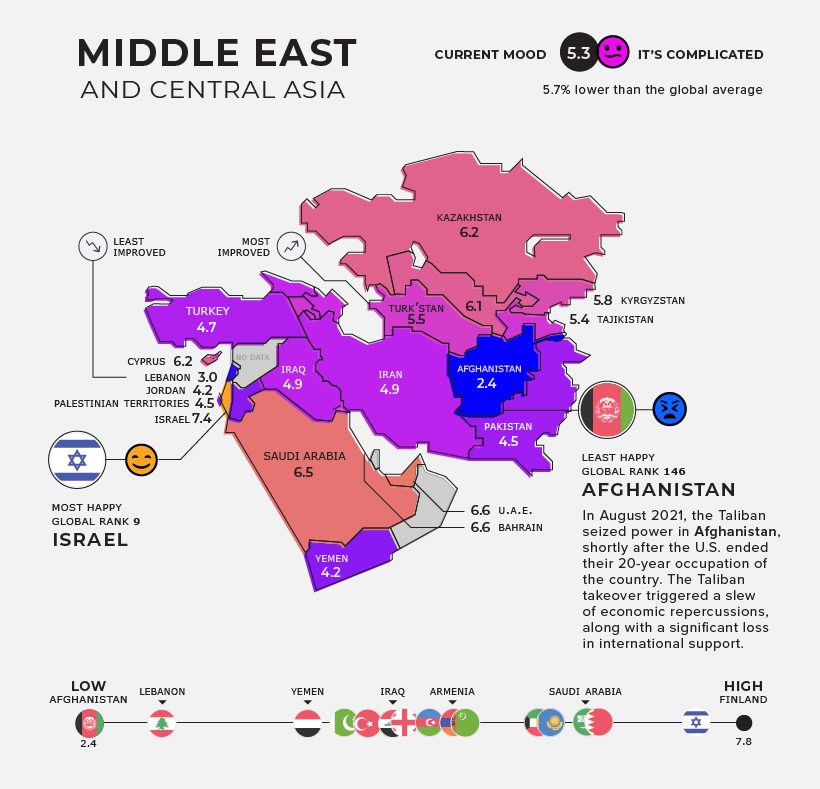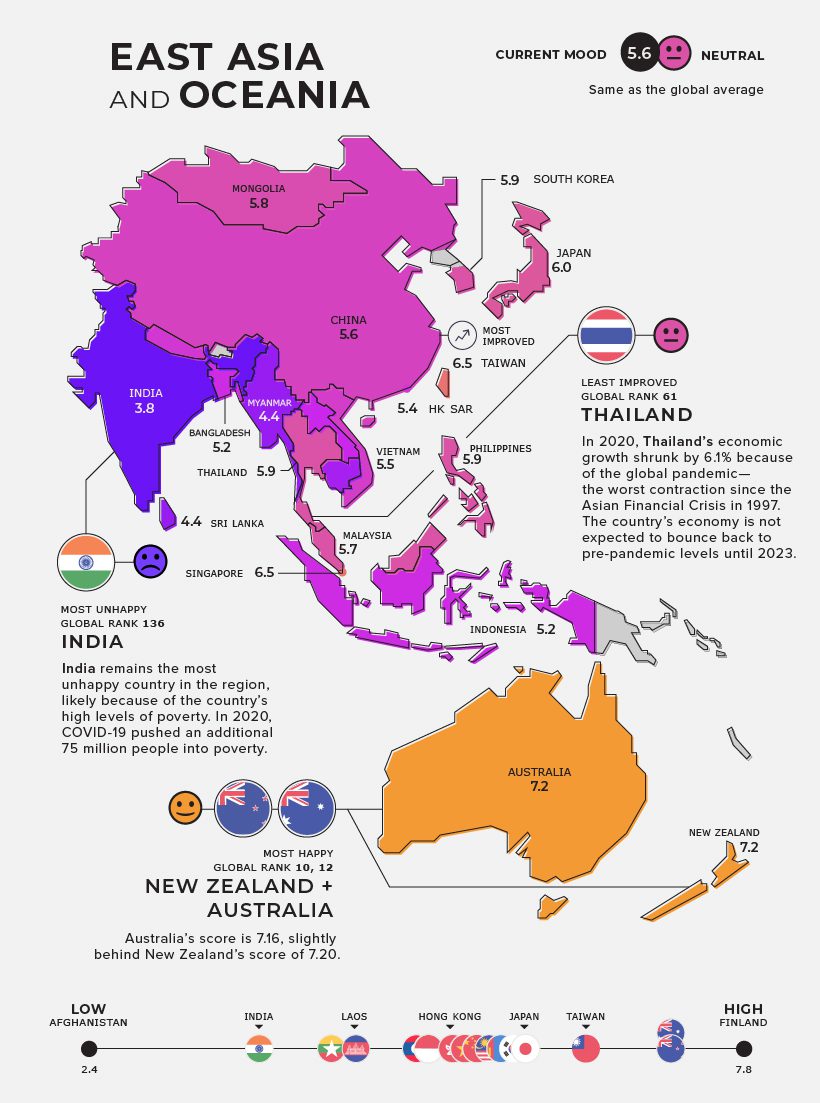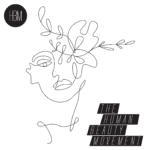
World Health Day is celebrated every year on April 7th, the anniversary of the founding day of the World Health Organization (WHO). It’s a day to focus on and raise awareness around health and wellness issues that affect people all over the globe. Each year, a theme is selected to highlight a priority area of public health concern in the world. This year, the theme is “Our planet, Our health,” and will be focusing on the availability of clean water, air, and food for all. In this blog, we will explore global health and happiness, along with how you can celebrate World Health Day.
What Is Global Health?
While definitions vary, we are expressing ‘global health’ as the status of health, wellness, and healthcare for all populations worldwide.
There are six key factors most critical to the global health conversation today:
Pandemics
According to an article published in the Bulletin of the World Health Organization, pandemics are defined as global disease outbreaks. Examples of pandemics include certain influenza outbreaks, COVID-19, and other viral threats that reflect our vulnerability to widespread diseases.
Every year, there are newly emerging pandemic threats. Vaccination efforts can help, but it’s critical to address issues at the source by focusing on important areas like health education and responsible agricultural practices. Researchers have also made recommendations on global risk mitigation measures that can help even after an outbreak occurs.
Climate Change
Storms, flooding, droughts, and air pollution make it easier for diseases to spread across large groups of people. The immediate solution is to provide resources like bottled water and sanitation technology, but global health must also focus on the prevention of environmental challenges in the first place.
Climate change is thought by many global health experts to be the greatest threat to human health. Global policies to mitigate mankind’s contribution to climate change are gaining traction with more countries regulating individual household energy consumption as well as encouraging large-scale industry progress toward environmentally-conscious practices.
Such changes will have profound health benefits for those who live in urban centers, which account for more than 50% of the world’s population.
Access to Healthcare
Despite relentless progress in the field of medicine, communities across the world still lack access to basic health education and healthcare. This results in health disparities, such as high infant mortality rates, which are often related to geography. Other disparities may be the result of income inequality, with some individuals and families being left unable to afford proper health care.
To solve these economic challenges, global health professionals are exploring opportunities to uplift underrepresented communities in public health forums, encouraging physicians to practice in remote areas, and introducing policies that reduce barriers and increase access to healthcare.
Political Instability
Inadequate access to healthcare is exacerbated when international politics enter the mix. As conflicts within or between nations destroy critical infrastructure, citizens become more vulnerable to diseases. This ultimately causes them to flee the dangerous situations that threaten their well-being.
Migration can allow illnesses to quickly spread, but the WHO stresses that solutions should aim to improve refugee and migrant health through efforts like organizing across borders to endorse policies that bridge short-term humanitarian crisis responses with long-term healthcare access improvements.
Noncommunicable Diseases
Heart disease, stroke, cancer, diabetes, and other noncommunicable diseases (NCDs) account for 70% of all deaths worldwide, according to the WHO.
Education plays a role in the prevention of NCDs, helping populations understand and change lifestyle factors, such as poor diets, inactivity, tobacco use, and alcohol consumption. However, there is also a correlation between income level and the prevalence of NCDs.
The WHO notes that 85% of premature NCD-related deaths occur in low- and middle-income regions. Reducing the number of NCDs globally means reducing the factors that disproportionately arise in lower-income communities.
Animal Health, Food Sourcing, and Supply
The study of veterinary public health makes it clear that animal wellness is naturally intertwined with that of humans. The clearest connection occurs within the food chain, but animals are also relied upon for transportation, draught power, and clothing in developing areas.
Agricultural practices, including irrigation, pesticide use, and waste management, can influence animal health, making disease transmission a concern at every stage of the food supply chain. With pathogens originating from animals or animal products playing such a significant role in disease transmission, veterinary medicine must be included in any effort to improve global health.
World Health Statistics
In May 2021, WHO released its annual “State of the World’s Health Assessment.” The report presents the latest data on Sustainable Development Goals (SDGs) and “Triple Billion” target indicators.
The 2021 edition includes preliminary estimates for global excess deaths attributable to COVID-19 for 2020 and the state of global and regional health trends from 2000 to 2019. It also focuses on persistent health inequalities and data gaps that have been accentuated by the pandemic.
Here are its key messages:
- Every country is facing challenges to report COVID-19 deaths, and the WHO is working with all stakeholders to refine statistical models and obtain accurate counts.
- As of December 31 2020, preliminary estimates suggest the total number of global deaths attributable to the COVID-19 pandemic in 2020 is at least 3 million, representing 1.2 million more deaths than the 1.8 million officially reported.
- The COVID-19 pandemic poses major threats to population health and well-being globally and hinders progress in meeting the SDGs and WHO’s “Triple Billion” targets. With 90% of countries reporting disruptions to essential health services and 3% of households spending more than 25% of their budget on healthcare in 2015, United Health Care is at great risk of falling behind.
- COVID-19 disproportionately impacts vulnerable populations; those living in overcrowded settings are met with a higher risk. Lack of data disaggregation contributes to unequal health outcomes, with only 51% of countries including disaggregated data in national statistical reports.
- Global life expectancy at birth is up from 66.8 years in 2000 to 73.3 years in 2019, with healthy life expectancy up from 58.3 to 63.7 years. The greatest gains are being made in low-income countries primarily due to rapid reductions in child mortality and communicable diseases.
- Global tobacco use is down by 33% since 2000, but adult obesity is on the rise with up to a quarter of populations in high-income countries obese in 2016. Noncommunicable diseases made up 7 of 10 causes of death worldwide in 2019.
- Between 2030 and 2050, climate change is expected to cause approximately 250,000 additional deaths per year.
- The direct damage costs to health (i.e. excluding costs in health-determining sectors such as agriculture and water and sanitation), is estimated to be between 2-4 billion USD/year by 2030.
- The WHO has partnered with Microsoft and Avanade to develop a new, state-of-the-art World Health Data Hub to improve access to data, streamline data processes, and provide health data as a public good.
The 2022 World Happiness Report
Pictured: Least and Most Happy Countries Source: Visual Capitalist
Global health is directly linked to world happiness. The numbers shown in the graphic above, which are from the World Happiness Report 2022, represent the survey data from thousands of respondents for each country, who are asked to rate their subjective well-being or happiness score.
Happiness levels are measured in this report by looking at:
- Social support
- Life expectancy
- Freedom to make life choices
- Generosity
- GDP per capita
- Perceptions of corruption
- Positive and negative effects
- The report takes special considerations to track how COVID-19 has impacted aspects of our daily lives, and how it’s affected global happiness levels.
Worldwide happiness comes in at an average score of 5.6, which is a slight improvement since 2021’s report. Here’s a more in-depth look at each region’s happiness levels:
North America
Source: Visual Capitalist
Like last year, Canada ranks first as the happiest country in North America. However, it’s lost some ground on the global ranking, placing 15th this year, compared to 14th last year. In contrast, the United States climbed three places in this year’s report and ranked just under Canada with a happiness score of 6.97.
The Dominican Republic comes in last place in North America. While the Dominican Republic has experienced economic growth over the last 25 years, the country was hit hard by the global pandemic; during this time, approximately 270,000 people fell into poverty.
South America
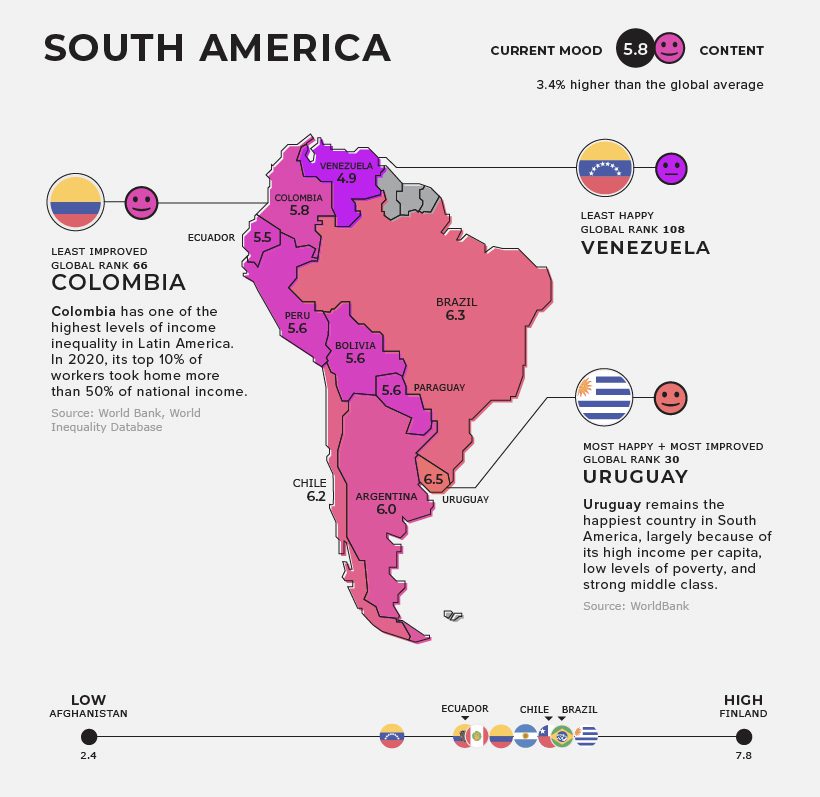
Uruguay is the happiest country in South America due to its high income per capita, low levels of poverty, and strong middle class. While Uruguay was not immune to the impacts of COVID-19, the country was able to transition smoothly to online learning and was the first country in the region to reopen schools.
In last year’s World Happiness Report, Colombia was the most improved country in South America; however, this year it’s dropped 14 places on the global ranking, making it the least improved country in this year’s report.
While Colombia has made significant strides toward elevating extreme poverty in the last few decades, it still has one of the highest levels of income inequality in Latin America. In 2020, its top 10% of workers took home more than 50% of national income.
Europe
Source: Visual Capitalist
Finland is not only the happiest country in Europe, but it also holds the top spot as the happiest country in the world for the fifth straight year. Finland is one of five Nordic countries to place in the top 10 with Denmark coming in second place and Iceland in third.
Romania was the most improved country in Europe, climbing 18 spots on the global ranking since last year’s report. Over the last decade, the country has seen some of the most significant economic growth in the European Union and was able to bounce back quickly from the COVID-19 pandemic.
Middle East and Central Asia
Source: Visual Capitalist
Turkmenistan is the most improved country in the region, rising 19 places on the global ranking since last year. The country’s boost could be explained by its rapid economic growth in recent years, where in 2021 alone, the country’s GDP grew by an estimated 6.3%.
For the last two years, Lebanon has been dealing with a slew of crises. In 2020, COVID-19 spurred an economic crisis that’s been ranked as one of the top 10 most severe economic crises since the mid-nineteenth century. And on August 4th, 2020, a massive ammonium nitrate explosion left the country’s capital city, Beirut, in shambles.
East Asia and Oceania
Source: Visual Capitalist
This year, China climbed 12 places on the global ranking, making it the most improved country in East Asia and Oceania. The Chinese government recently identified “common prosperity” as a top priority, leading them to make numerous policy shifts to combat inequality and eradicate poverty.
Thailand has improved the least in the region due to the significant toll that COVID-19 had on the country’s economy. In 2020, economic growth shrunk by 6.1% in Thailand and is not expected to bounce back to pre-pandemic levels until around 2023.
Africa
Source: Visual Capitalist
With a regional score of 4.5, Africa ranks as the unhappiest region worldwide. Zimbabwe remains the most unhappy country in the region, as it continues to struggle with high levels of poverty. In 2021, roughly 6.1 million people were living below the international poverty line.
Mauritius remains the happiest country in the region, which is most likely due to its higher levels of income. It became a high-income country in July 2020; however, Mauritius slipped back to its upper-middle-income status in 2021 during the COVID-19 pandemic.
How You Can Celebrate World Health Day
Celebrating and observing World Health Day can be done by individuals, families, schools, churches, and other community organizations. It’s a notable time to connect with others over important themes and increase knowledge.
Here are a few ways you can celebrate World Health Day:
Reduce Health Inequalities
The COVID-19 pandemic sparked awareness that our health is our biggest resource. Also, it highlighted that our world is fundamentally unequal. Put simply, differences in socioeconomic status mean differences in access to health services and healthier lives.
Vulnerable groups in the world were hit hardest during the pandemic, struggling for survival under poor living conditions and without access to necessities such as clean water and food security.
Learn more about universal health inequalities here, then consider what you can do to lessen the divide.
Support Global Health
Honor World Health Day by supporting needy people and giving them a better chance at good health. Consider donating nutritious food to a community food pantry or volunteering to help cook and serve healthy meals at a local soup kitchen.
There are many non-profit organizations that provide food and health services on a global scale. Do some research, select a cause that resonates with you, and take action.
Get A Check-Up
With a focus on global health awareness, it’s a great time to turn your attention toward your own health. Try scheduling a doctor’s appointment for an annual checkup to learn more about your health and wellness.
Your doctor will likely check your vital signs, such as blood pressure and heart rate, along with a physical examination. Laboratory tests, such as a complete metabolic panel, may be conducted to check your blood and vital organs.
Always ask your doctor if you have any questions or concerns about your health. While you’re there, thank your nurse for their hard work and the positive impact they’re making in people’s lives.
Run a 5K
The arrival of spring brings along warm weather and outdoor charity events and functions. Try using your fitness, physical health, and motivation to give back to others through a 5K charity run.
Even if you’re not a runner, you may still be able to participate, considering that many 5Ks touted as fundraisers, fun runs, or community events are usually open to walkers. However, there is often a separate start time for walkers, so make sure to check the organization’s website before the run.
Exercise and physical activity provide many health benefits, and when paired up with a charity, you’re also supporting a good cause. You can learn more about running or walking a 5K here.
Set New Health Goals
If your New Year’s resolutions have taken the back burner since the start of the pandemic, now is a great time to revisit your health-oriented goals. Grab a pen and paper and take some time to jot down your thoughts and aspirations.
Maybe you have a fitness goal, such as increasing your running or walking distance, adding an extra full-body workout day to your week, or trying out meditation. Or maybe you want to focus on your mental health by keeping a journal.
Whether you’re trying to add more fruits and vegetables into your diet or improve your hydration habits by drinking water or cutting out soda, focusing on your personal well-being and choosing small goals can make a big difference in your life. Here are a few tips to help you achieve your goals.
How Will You Celebrate?
Let us know how you plan to recognize World Health Day. If you’d like to read up on past World Health Day themes, you can read more about World Health Day here.

